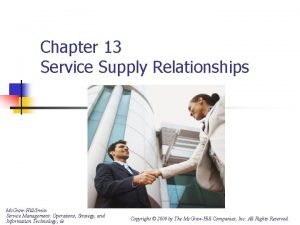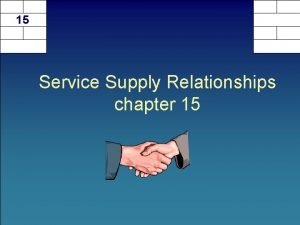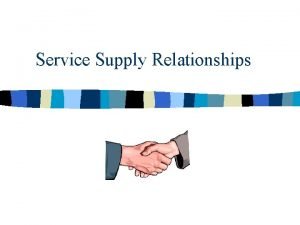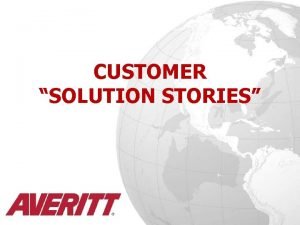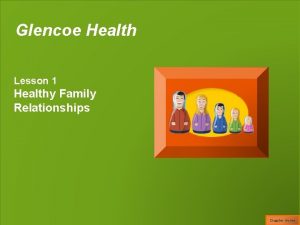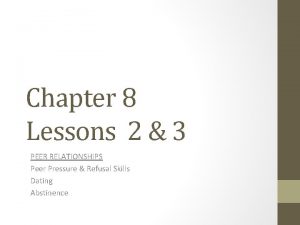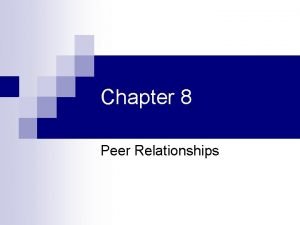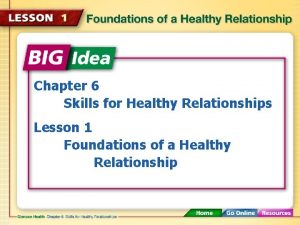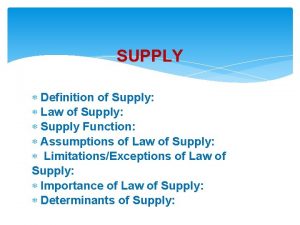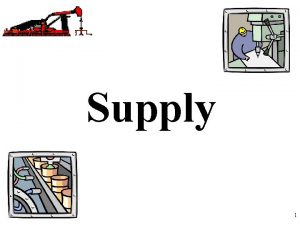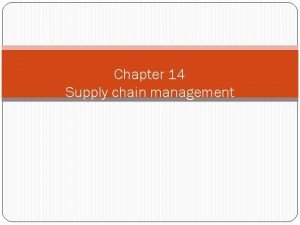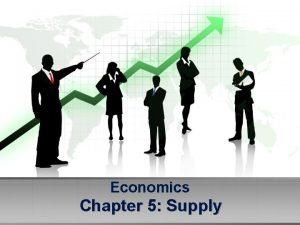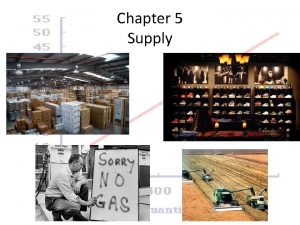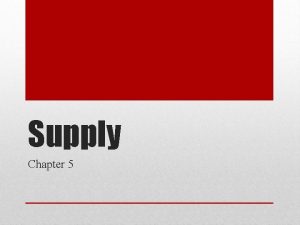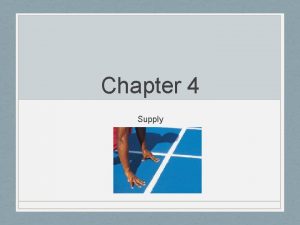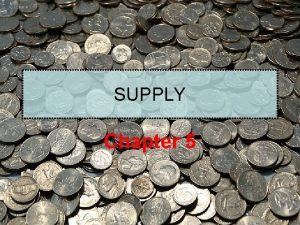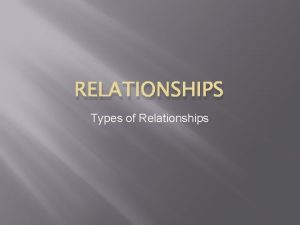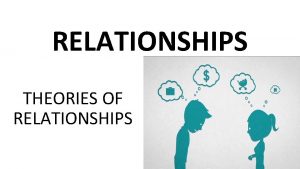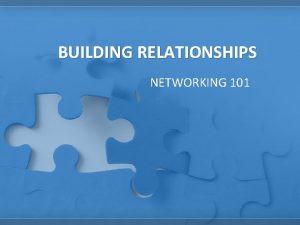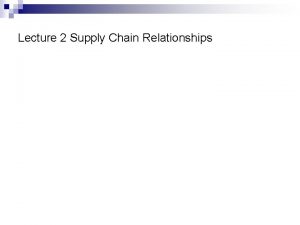Chapter 13 Service Supply Relationships Mc GrawHillIrwin Service




















- Slides: 20

Chapter 13 Service Supply Relationships Mc. Graw-Hill/Irwin Service Management: Operations, Strategy, and Information Technology, 6 e Copyright © 2008 by The Mc. Graw-Hill Companies, Inc. All Rights Reserved.

Learning Objectives n n n Contrast the supply chain for physical goods with service supplier relationships. Identify the sources of value in a service supply relationship. Discuss the managerial implications of bidirectional relationships. Identify the three factor that drive profitability for a professional service firm. Classify business services based on the focus of the service and its importance to the outsourcing organization. Discuss the managerial considerations to be addressed in outsourcing services. 13 -2

Supply Chain for Physical Goods Suppliers Disposal Recycling/Remanufacturing Product and Process Design Manufacturing Material Transfer Distribution Retailing Consumer After-sales Service Information Transfer 13 -3

Customer-Supplier Duality in Service Supply Relationships (Hubs) 13 -4

Single-Level Bidirectional Service Supply Relationship Service Category Customer -Supplier >Input Output> Service Provider Minds Student >Mind Knowledge> Professor Bodies Patient >Tooth Filling> Dentist Belongings Investor >Money Interest> Bank Information Client >Documents 1040> Tax Preparer 13 -5

Two-Level Bidirectional Service Supply Relationship Service Category Customer -Supplier >Input Output> Service Provider >Input Output> Provider’s Supplier Minds Patient >Disturbed Treated> Therapist >Prescription Drugs> Pharmacy Bodies Patient >Blood Diagnosis> Physician >Sample Test Result> Lab Belongings Driver >Car Repaired> Garage >Engine Rebuilt> Machine Shop Information Home Buyer >Property Loan> Mortgage Company >Location Clear Title> Title Search 13 -6

Service Supply Relationships n n Customer-Supplier Duality Service Supply Relationships are Hubs, not Chains Service Capacity is Analogous to Inventory Customer Supplied Inputs Can Vary In Quality 13 -7

Sources of Value in Service Supply Relationships n n n Bi-directional Optimization Managing Productive Capacity - Transfer: make knowledge available (e. g. web based FAQ database) - Replacement: substitute technology for server (e. g. digital blood pressure device) - Embellishment: enable self-service by teaching (e. g. change surgical dressing) Management of Perishability 13 -8

Impact of Service Supply Relationships 13 -9

Impact of Service Supply Relationships (cont. ) 13 -10

Professional Service Firms Body of Knowledge n n Cognitive knowledge (know-what) Advanced skills (know-how) Systems understanding (know-why) Self-motivated creativity (care-why) 13 -11

Professional Service Firms Operational Characteristics n Profit-per-Partner n Productivity 13 -12

Profitability Tactics Tactic Lower Fixed (Overhead) Costs Category Margin Improve cash cycle Reduce office space and equipment Reduce administrative and support staff Raise Prices and Differentiate Productivity Specialize, innovate, add more value Target higher value work Invest in training Invest in higher value services Address Underperforming Projects Productivity Drop unprofitable services Drop unprofitable customers Increase Volume Productivity Increase utilization Lower Variable Costs Leverage Improve engagement management Increase leverage of professionals Increase the use of paraprofessionals 13 -13

Outsourcing Services n n Benefits • Allows the firm to focus on its core competence • Service is cheaper to outsource than perform in-house • Provides access to latest technology • Leverage benefits of supplier economy of scale Risks • Loss of direct control of quality • Jeopardizes employee loyalty • Exposure to data security and customer privacy • Dependence on one supplier compromises future negotiation leverage • Additional coordination expense and delays • Atrophy of in-house capability to perform service 13 -14

Outsourcing Process 13 -15

Taxonomy for Outsourcing Business Services 13 -16

Outsourcing Considerations 13 -17

Outsourcing Considerations 13 -18

Outsourcing Considerations 13 -19

Topics for Discussion n How can effective goods supply chain management support environmental sustainability? Explain why the goods analogy of a supply chain is inappropriate for services? Discuss the implication of service outsourcing on employees, stockholders, customers, and host country economy when a firm outsources a call center overseas. 13 -20
 Customer supplier duality
Customer supplier duality Single-level bidirectional service supply relationship
Single-level bidirectional service supply relationship Chapter 5 section 1 supply
Chapter 5 section 1 supply Elastisidad ng supply
Elastisidad ng supply Matching supply and demand in supply chain
Matching supply and demand in supply chain Two-level bidirectional service supply relationship
Two-level bidirectional service supply relationship Multi service supply
Multi service supply Chapter 7 family relationships
Chapter 7 family relationships Chapter 8 lesson 1 safe and healthy friendships
Chapter 8 lesson 1 safe and healthy friendships Chapter 7 lesson 1 healthy family relationships
Chapter 7 lesson 1 healthy family relationships Chapter 2 principles of ecology
Chapter 2 principles of ecology Chapter 2 section 1 organisms and their relationships
Chapter 2 section 1 organisms and their relationships Principles of ecology chapter 2 section 2 answer key
Principles of ecology chapter 2 section 2 answer key Chapter 2 section 1 organisms and their relationships
Chapter 2 section 1 organisms and their relationships Chapter 8 peer relationships
Chapter 8 peer relationships Chapter 6 skills for healthy relationships
Chapter 6 skills for healthy relationships Chapter 5 family relationships answers
Chapter 5 family relationships answers Chapter 18 healthy family and peer relationships
Chapter 18 healthy family and peer relationships Relationships within triangles
Relationships within triangles 1-5 angle relationships
1-5 angle relationships Chapter 7 family relationships
Chapter 7 family relationships
